Tourist Attractions & Best Things to Do in Vientiane, Laos
This Vientiane travel guide highlights plenty of things to do, from exploring must-see attractions like Pha That Luang and Wat Sisaket to visiting tourist places such as the iconic Patuxai monument and the quirky Buddha Park just outside town.
Additionally, Vientiane’s vibrant culinary scene surprises visitors with its range—from elegant French bistros to flavorful Lao street food. For travelers looking to uncover cultural experiences and unique activities, Vientiane delivers a calm yet rewarding experience.
Vientiane, one of Southeast Asia’s smallest and most relaxed capitals, stretches along the banks of the Mekong River and blends laid-back charm with French colonial flair. Although the city feels quieter than Luang Prabang.
Pha That Luang: A Must- See Attraction
Pha That Luang, a 148-foot-high (45-meter-high) golden stupa, stands as Vientiane’s most iconic attraction and the most important religious monument in Laos.
Dating back as early as the 3rd century AD, this sacred site draws both tourists and pilgrims who believe it houses a relic of the Buddha—a bone and a strand of hair. Moreover, it hosts Boun That Luang, Laos’ most significant religious festival, making it a must-see attraction in Vientiane for travelers interested in culture, history, and architecture.
Patuxai monument (Victory Gate)
Patuxai, also known as the Victory Gate, rises proudly over Vientiane’s city center and serves as one of the s top must-see places to visit.
Often called Vientiane’s Arc de Triomphe, this striking monument blends brutalist, Napoleonic, and traditional Lao architecture. Inside, travelers can admire detailed artworks, then climb to the top for panoramic views of the city.
Moreover, the area around Patuxai buzzes with souvenir stalls, making it a great stop for both sightseeing and shopping during your Vientiane travel experience.
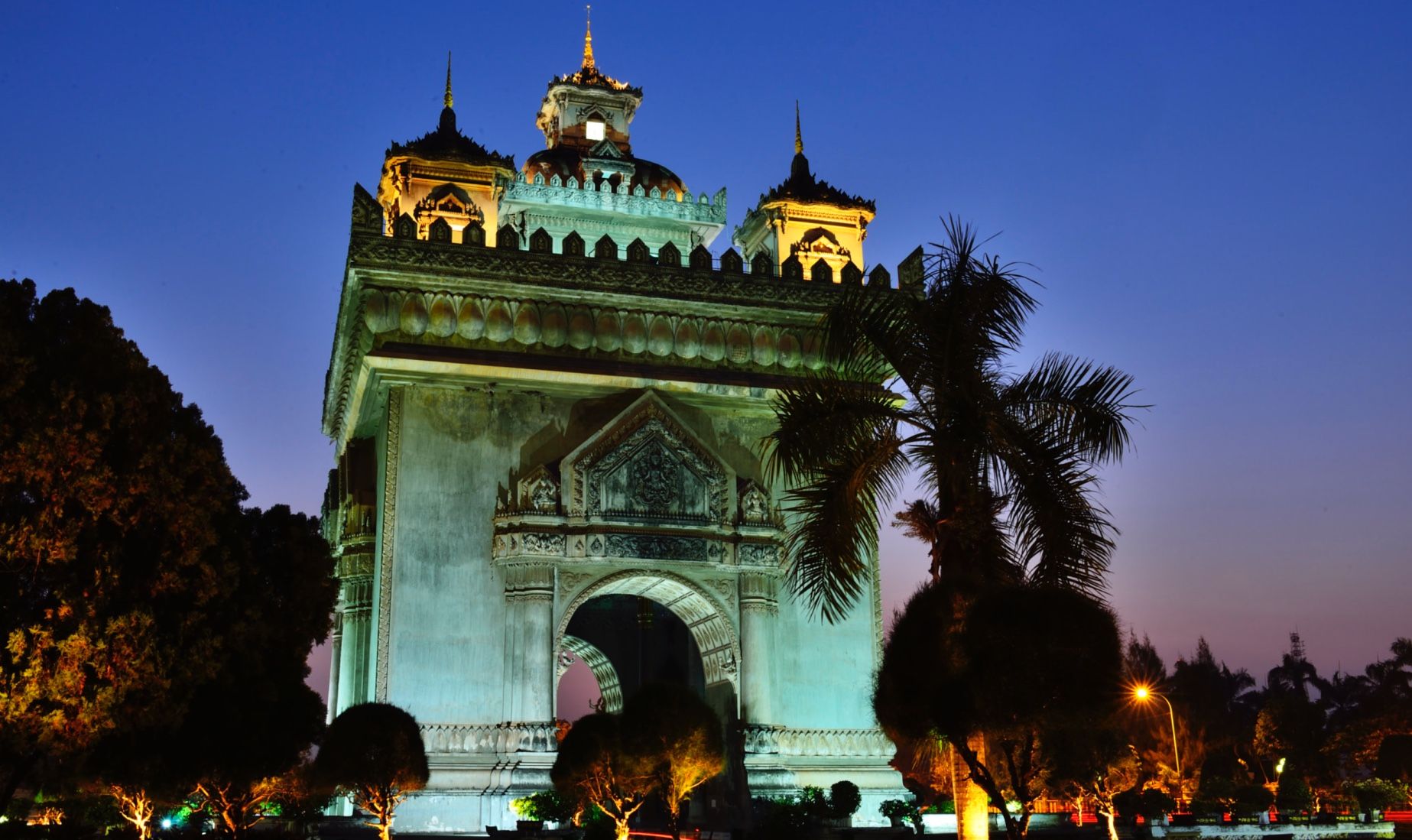
Wat Sisaket (Wat Si Saket): Top Historic Attraction
Wat Sisaket, built in early 18th century, stands out as one of the top things to do in Vientiane thanks to its rare Siamese-style architecture—a unique contrast in a city known for traditional Laotian temples.
Visitors exploring this historic Buddhist temple in Vientiane will discover over 6,000 Buddha statues made from wood, stone, and bronze, many dating back to the 16th and 19th centuries. In the early morning, locals gather here to pray and offer alms at the foot of a hand-carved naga serpent, creating a peaceful, spiritual atmosphere. For those interested in culture and history, Wat Sisaket is a must-see historic temple in town.
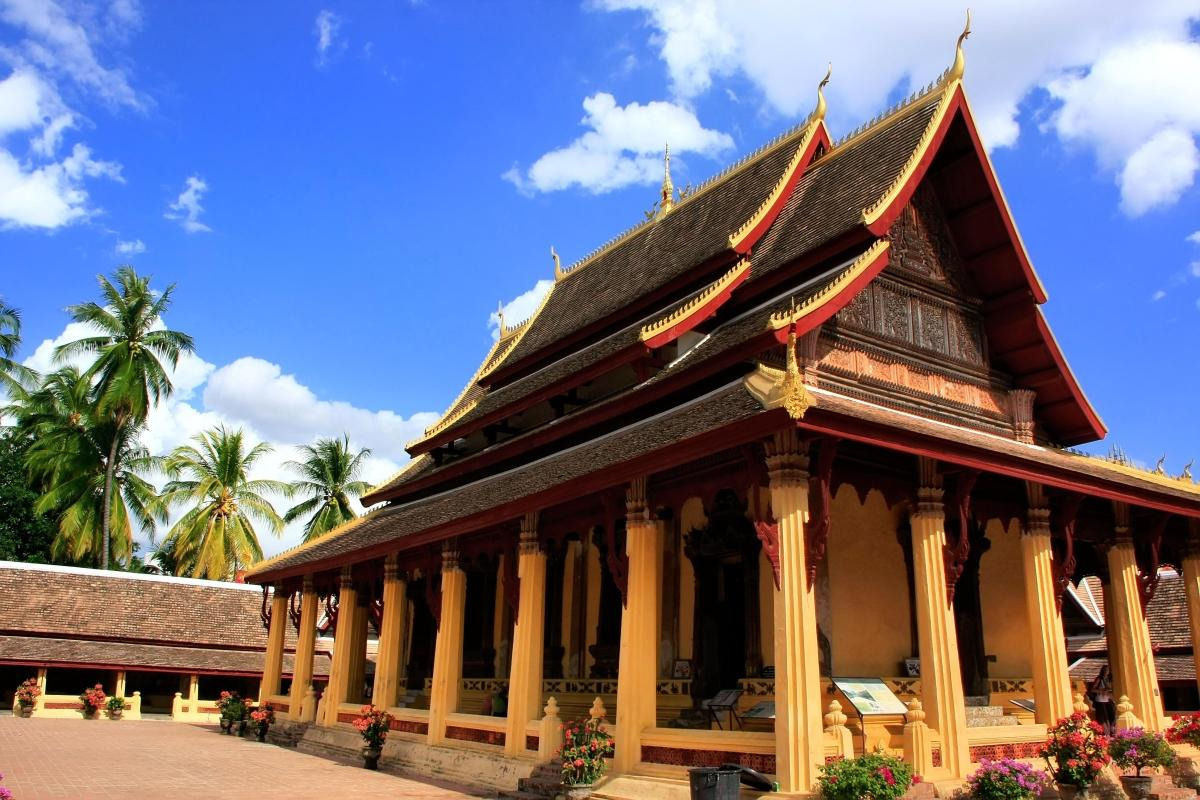
Buddha Park (Xieng Khuan): Best for a day trip
Located about 15 miles (25 kilometers) southeast of the city, Buddha Park Vientiane—also known as Xieng Khuan—offers one of the most unusual tourist attractions near Vientiane.
This eccentric sculpture garden showcases massive cement statues inspired by Buddhist and Hindu mythology, including a colossal reclining Buddha and a giant pumpkin structure with a demon-headed entrance.
Created by a Thai mystic, the park blends spirituality with surrealism, making it a must-visit for those seeking offbeat Vientiane travel. Additionally, the park’s riverside setting adds a peaceful backdrop for exploring these bizarre and fascinating works of art.

COPE Visitor Centre: Top Things to do
COPE Visitor Centre in Vientiane offers one of the most unique things to do in the city, especially for travelers interested in history and social impact.
COPE (Cooperative Orthotic & Prosthetic Enterprise) supports victims of unexploded ordnance (UXO) from the Vietnam War and assists others with disabilities across Laos.
At the visitor centre, you can explore powerful exhibits, watch informative documentaries, and learn how the legacy of war still affects lives today.
Moreover, the on-site café and gift shop give visitors a chance to support this vital cause while enjoying a quiet break. As a result, COPE stands out as a must-visit Vientiane attraction for responsible travelers.
Wat Si Muang
Wat Si Muang, often considered the spiritual heart of Vientiane, attracts both locals and tourists seeking blessings and good fortune.
Known for housing the city’s sacred pillar, this bustling Buddhist temple in Vientiane stays busy year-round as worshippers gather to pray and ward off bad luck.
Around November, the temple becomes even more significant as it kicks off the candle-lit procession that marks the beginning of the That Luang Festival, Laos’ most important religious celebration. For those exploring must-see attractions in Vientiane, Wat Si Muang offers a vibrant, authentic glimpse into local spiritual life.
Lao Presidential Palace
The Presidential Palace in Vientiane stands as one of the city’s most impressive architectural buildings, showcasing a grand Beaux-Arts style that adds colonial elegance to the cityscape.
Although constructed in 1986, its classic design gives it a much older, regal appearance. While visitors can’t enter the palace, they often stop by to take some photos to its ornate facade and take photos, especially in the evening when it’s beautifully lit.
As one of the top things to see in Vientiane, the Presidential Palace offers a quick yet memorable stop on any travel itinerary.
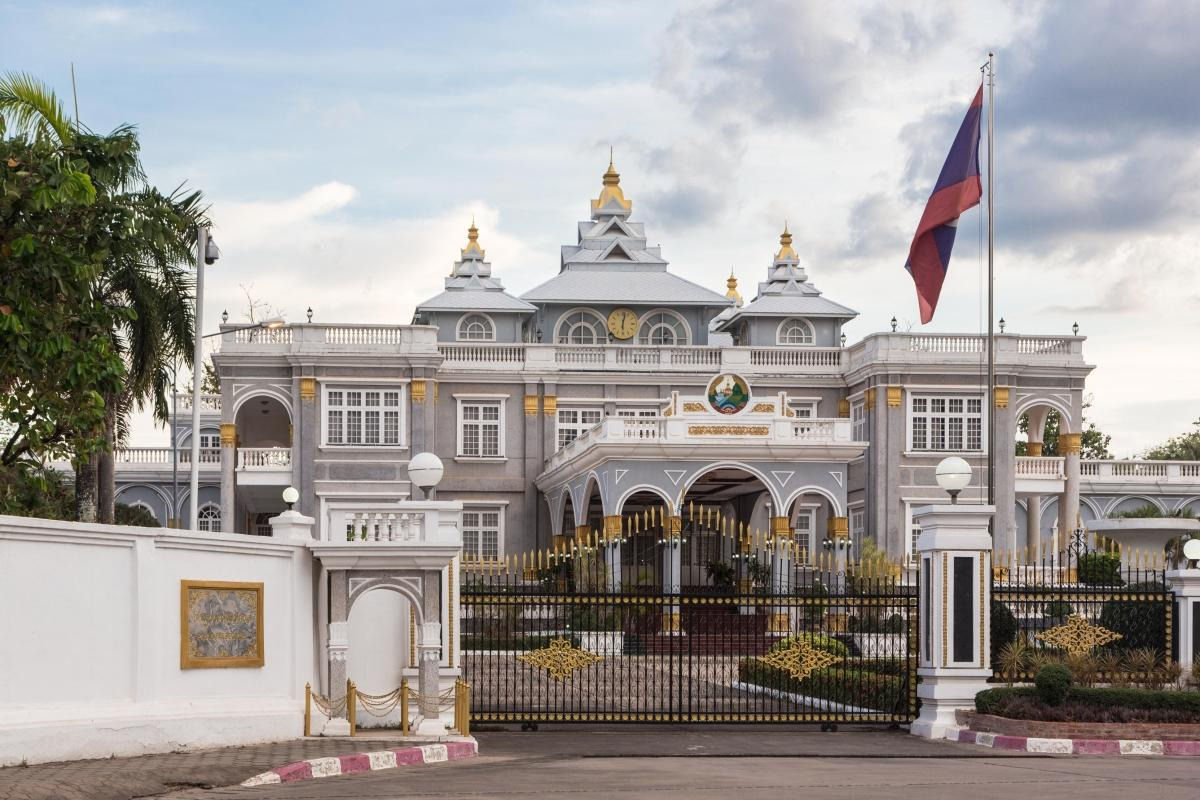
Lao Textiles
At Lao Textiles in Vientiane, American designer Carol Cassidy leads a team of 40 skilled Lao artisans who actively preserve and reinvent the country’s rich weaving traditions.
Using techniques like brocade, ikat, and tapestry, they craft exquisite pieces ranging from scarves and shawls to cushion covers and wall hangings.
Additionally, visitors can tour the working studio, offering a deeper look into Laos’ cultural artistry. For those seeking unique and free things to do in Vientiane, Lao Textiles blends creativity, craftsmanship, and cultural immersion into one memorable experience.
Haw Phra Kaew (Ho Phra Keo)
Located in the heart of Vientiane, Haw Phra Kaew (also spelled Ho Phra Keo) stands as one of Laos’ most treasured cultural landmarks.
Originally built in 1565 to house the sacred Phra Keo, or Emerald Buddha, this former royal temple now serves as a premier museum of religious art in Laos.
Although the original statue now resides in Bangkok, the museum showcases a stunning collection of ancient Buddhist artifacts, sculptures, and artwork.
Visitors also admire the serene temple grounds, which feature beautifully manicured gardens and intricate architectural details, making Haw Phra Kaew a must-visit destination for anyone exploring Vientiane’s rich heritage.
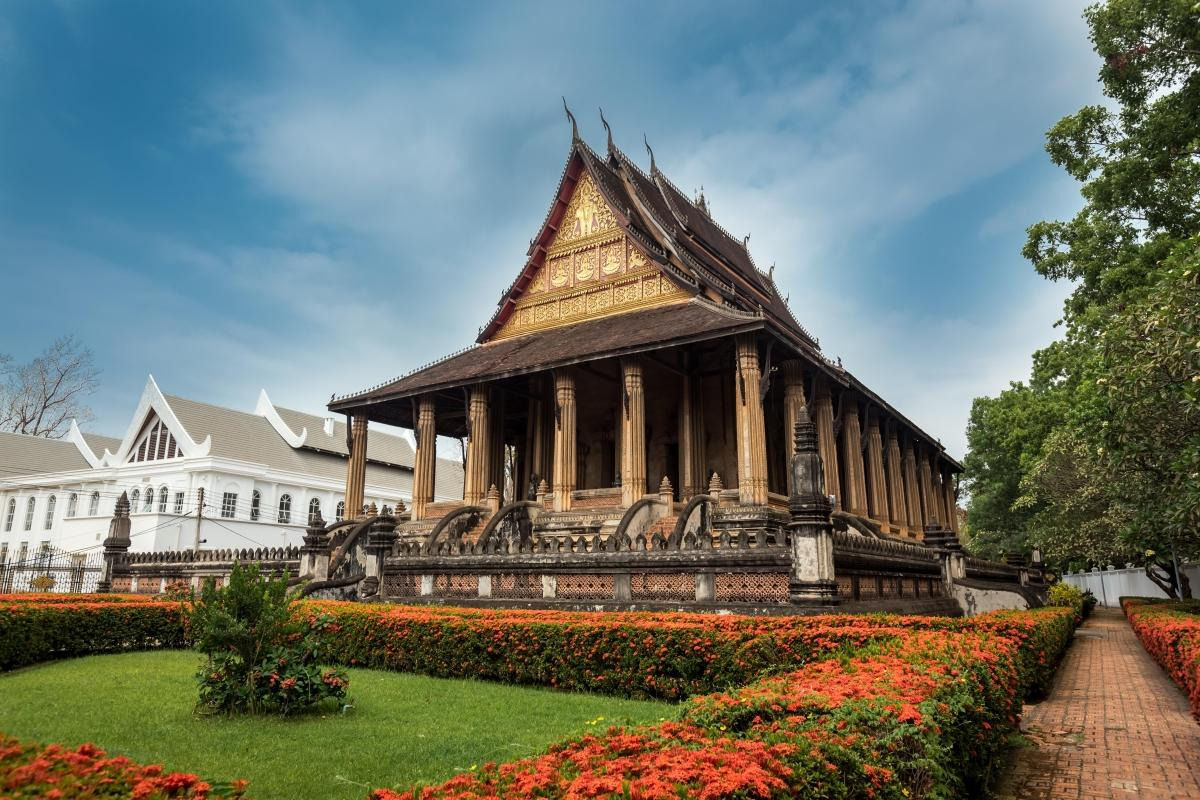
Vientiane Morning Market (Talat Sao)
Vientiane Morning Market, also known as Talat Sao, has evolved from a traditional open-air market into a bustling shopping complex with two modern malls and a lively market area.
Shoppers explore a wide variety of goods, from traditional Lao textiles and handwoven skirts to unique souvenirs like snake whiskey and hand-carved wooden boxes.
Despite the modern makeover, the market still offers an authentic shopping experience in Vientiane. Imported products often carry high price tags due to steep duty taxes, and counterfeit items are common, so bargain hunters should shop with care.
Itineraries for your Vientiane trip
Three days in this bustling capital city give travelers a chance to engage in activities, experience the culture, traditions and the people of this still somewhat undiscovered destination. Whether its exploring the Wats, combing through night markets or tucking into local cuisine, there’s plenty to do, see and experience here.
Day 1: Tour the Vientiane temples
Follow the itinerary: Vientiane is home to dozens of temples and Wats of historical, religious and national significance. Spend the day exploring several of these Laotian treasures, either on foot or aboard a local tuk-tuk. Start the day at Wat Si Saket, a Siamese-styled structure that sits in a city where traditional design is much more popular.
The temple’s cloister walls hold thousands of carved Buddha statues, making it a favorite destination among travelers. Next head to Wat Si Muang, where a massive pillar is said to house the body of a woman who once jumped to her death.
- Check out Private Laos Tours
Day 2: Buddha Park and Local Markets
Hire a tuk-tuk or travel via local bus to Buddha Park, a meadow located about an hour outside Vientiane that’s home to dozens of massive concrete sculptures.
Though not of any real religious significance, the park is a picturesque place for a picnic lunch or recreational photo shoot. Afterwards, head back to the city center and spend the rest of the day combing through the Morning Market, where traditional crafts and souvenirs line the stalls that make up this must-see stop.
Day 3: History and Culture of Vientiane
Start the day at the COPE Visitor Centre to learn about how the local community is supporting victims of landmine explosions.
Wander the museum, filled with contemporary artwork made by survivors, and head to the gift shop to support this worthy cause. Then trek to the famous Victory Monument—a homage to Laos’ much-stories past—and climb to the top for incredible views of the city skyline, Mekong River and nearby Thailand.
Top activities in Vientiane
Vientiane, the laid-back capital of Laos, offers travelers a mix of cultural charm and scenic beauty.
Start your activities with a visit to the iconic Patuxai Monument, often called Laos’ Arc de Triomphe, before exploring the golden stupa of Pha That Luang, the country’s most sacred religious site.
Dive into history and art at Haw Phra Kaew and Wat Si Saket, both showcasing stunning Buddhist architecture and religious artifacts.
For a relaxing experience, stroll along the Mekong River at sunset or browse local handicrafts and street food at the Vientiane Night Market.
Don’t miss shopping at Talat Sao (Morning Market) for traditional Lao textiles and unique souvenirs.
With its rich heritage, peaceful atmosphere, and welcoming locals, Vientiane ranks among the top destinations in Laos for culture, sightseeing, and authentic local experiences.
Tips for visiting Vientiane, Laos
When to visit
For the best experience visiting Vientiane, plan your trip during the cool dry season from November to February.
This period offers the most comfortable weather, perfect for exploring temples, strolling along the Mekong River, and enjoying outdoor markets. While Laos has two dry seasons, the hot one—typically from March to April—brings intense heat that makes sightseeing uncomfortable.
From March to May, much of the country also suffers from heavy smoke caused by widespread burning of rice stubble. To enjoy the top attractions in Vientiane without extreme heat or haze, choose the cool season for your Laos travel itinerary.
Getting around Vientiane
Getting around Vientiane feels more relaxed than in many other capitals. You won’t find subways or high-speed trams here—public transportation still relies on tuk-tuks and songthaews, the colorful shared trucks common across Laos.
Although some travelers rent bicycles to explore the city at a slower pace, most visitors prefer using Loca, the popular ride-hailing app in Laos. Loca works like Uber and provides reliable two- and four-wheel taxi options throughout the city.
Exchange money in Vientiane
When visiting Vientiane, Laos, exchange your US Dollars (USD), Thai Baht (THB), or Euros (EUR) into Lao Kip (LAK) at major banks like BCEL, Lao Development Bank, or Lao-Viet Bank, open weekdays from 8:00 AM to 4:00 PM.
For faster service, use licensed exchange booths in tourist areas—Khamsy, Jonsuda, and NT Exchange offer good rates. You can also exchange in your hotel and airport kiosks, at lower rate.
Always compare rates, count your cash on the spot, and bring clean bills for smoother transactions.
FAQ: Things to do in Vientiane
Not really! Traveling in Vientiane, Laos costs significantly less than in neighboring Thailand or Western countries.
You can find hostel beds for under US$15 per night, rent a comfortable apartment for less than US$30, and enjoy boutique hotels starting at just US$60.
Food, drinks, and transportation stay affordable, making Vientiane a top budget-friendly destination in Southeast Asia. Whether you’re backpacking or looking for affordable comfort, visiting Vientiane lets you experience Laos without breaking the bank.
Vientiane is less touristy and stands out among Southeast Asian capitals for its small size, laid-back vibe, and low-rise cityscape, with a population under one million.
Travelers visiting Vientiane can explore iconic landmarks like Pha That Luang, a 45-meter golden stupa and the most sacred monument in Laos, and Patuxai, a striking war memorial often compared to the Arc de Triomphe.
In the evening, head to the Mekong River for unforgettable sunset views. With its relaxed pace and rich cultural sites, Vientiane offers a unique and peaceful experience in Laos.
2 days at least: Travelers visiting Vientiane can explore the city’s main attractions in just one or two days, making it perfect for a quick cultural stop.
However, to truly enjoy Vientiane, spend a few days discovering its local restaurants, taking relaxing strolls along the Mekong River, and wandering through its scenic alleys and quiet backstreets. With its compact size and laid-back charm, Vientiane invites visitors to slow down and soak in the authentic atmosphere of Laos’ capital city.
Start your Vientiane itinerary with top attractions like Patuxai, Pha That Luang, Wat Sisaket, and Haw Phra Kaew, a former temple now showcasing religious art.
In the evening, join a Lao cooking class for a hands-on dinner experience. On day two, shop for local goods at Talat Sao Market, explore the COPE Visitor Centre to learn about Laos’ Secret War, and head to Buddha Park to see its surreal sculptures. End your day with a sunset drink along the Mekong River.
This two-day Vientiane travel plan covers history, culture, food, and scenic views in Laos’ relaxed capital.
Vientiane showcases its signature landmark, Patuxai (Victory Gate), a striking Laotian version of the Arc de Triomphe that celebrates independence from France.
Travelers visiting Vientiane also flock to Pha That Luang, the city’s most sacred monument featuring a towering gold-plated stupa, and Wat Sisaket, a beautifully preserved Thai-style temple filled with Buddha images.
For something more surreal, head to Buddha Park, where unusual, weathered sculptures create one of the best selfie spots in Laos. These highlights make Vientiane a must-visit destination for culture and history lovers.
Vientiane won’t win awards for nightlife or excitement, but travelers visiting Laos should still spend time in the capital city. Take in a stunning Mekong sunset, explore beautiful temples, and enjoy a mix of fine French cuisine alongside authentic Lao dishes. Whether you have a few hours or a full day, Vientiane offers a relaxed and charming stop on any Laos travel itinerary.
Things to do in Vientiane at night
When exploring things to do in Vientiane at night, the city offers a vibrant mix of bars and cafes that cater to every taste. You can relax and chill and or find a great place for a Lao massage. Start your evening at popular bars for great music and selection of drinks and cocktails, check out places like;
- Riverside Bar
- Samsenthai Bar
- Xaysetha Bar
- Bora Bora Bar
- Naga Bar
For a more relaxed vibe, visit cafes for delicious coffee, desserts, and cozy atmospheres. Whether you want to dance, enjoy cocktails by the Mekong, or unwind with a cup of freshly brewed coffee, Vientiane’s nightlife scene provides plenty of options for an unforgettable evening in Laos’ capital.
- Joma Bakery Café
- Baan Sib Cafe
- Little Sheep Coffee
- The Garden Cafe
- Le Trio Coffee

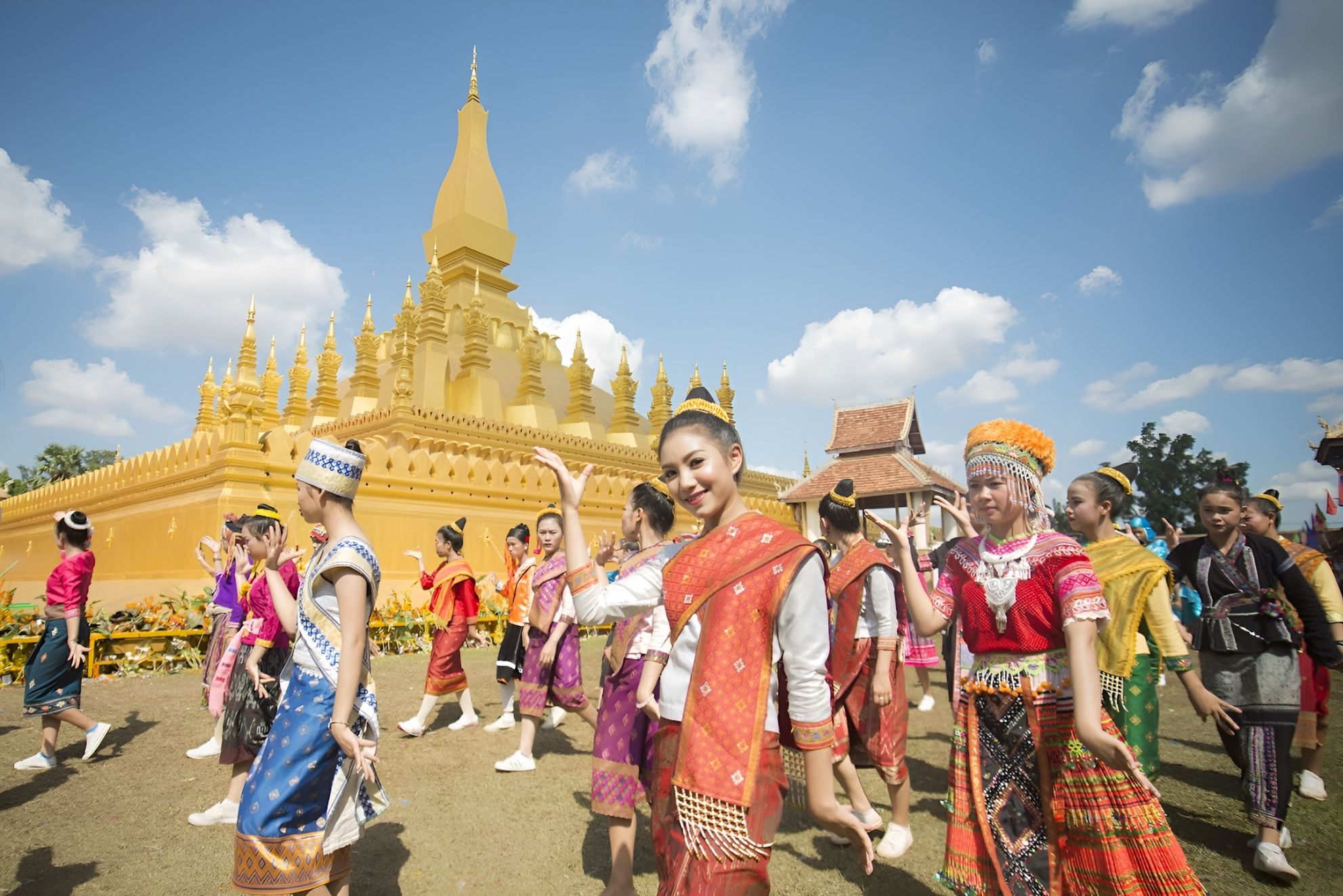
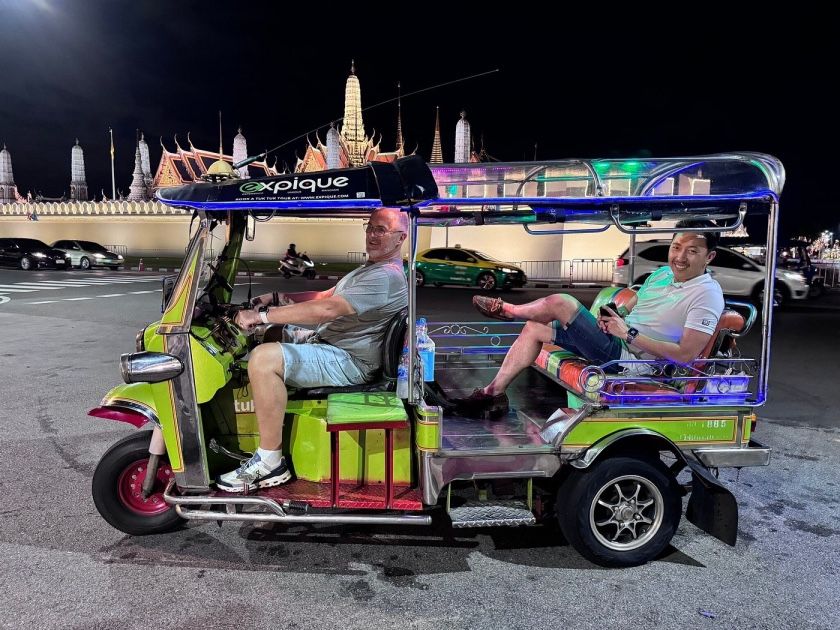
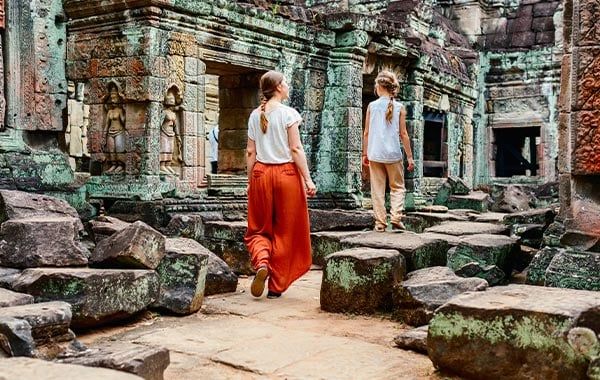

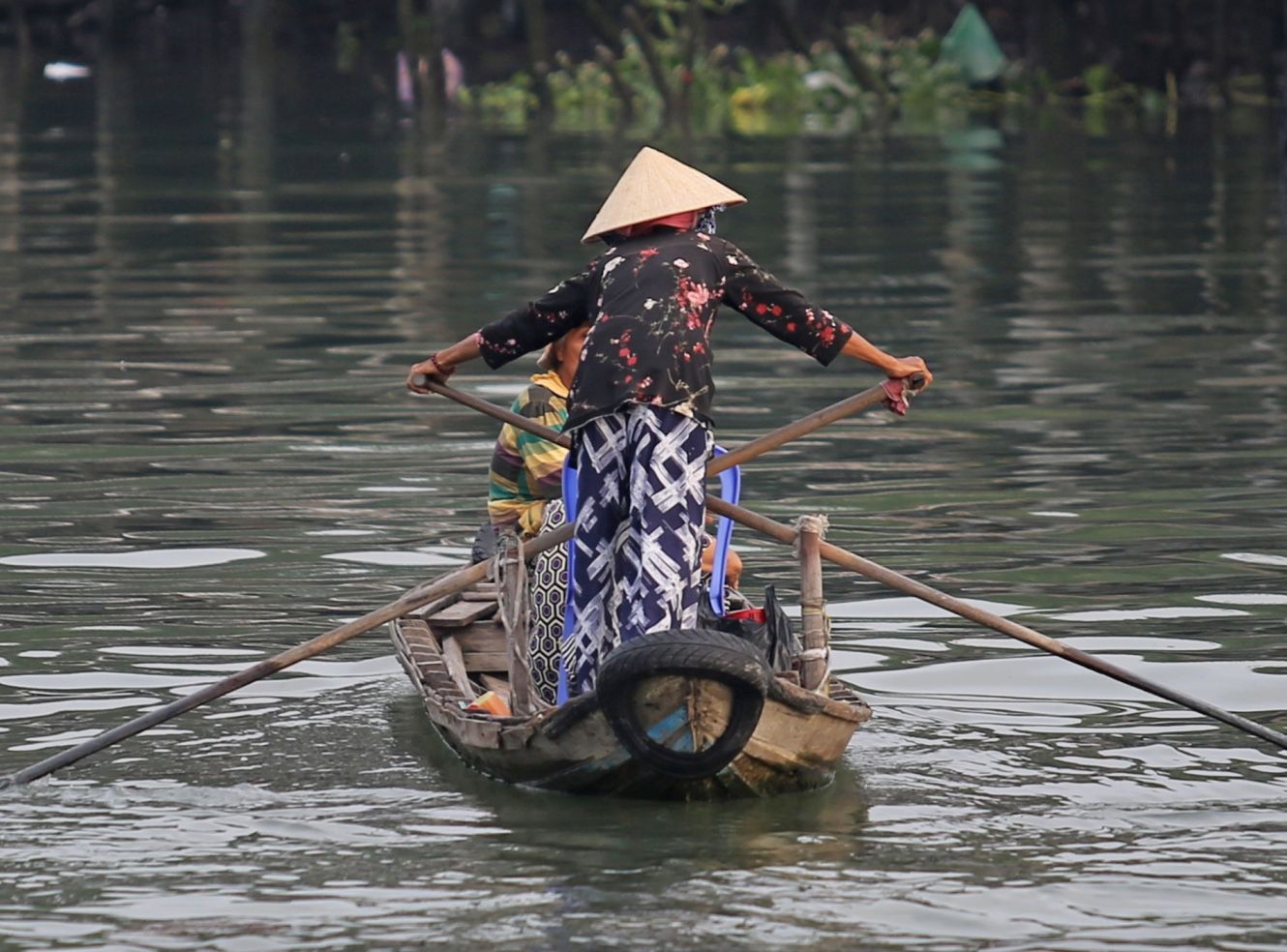
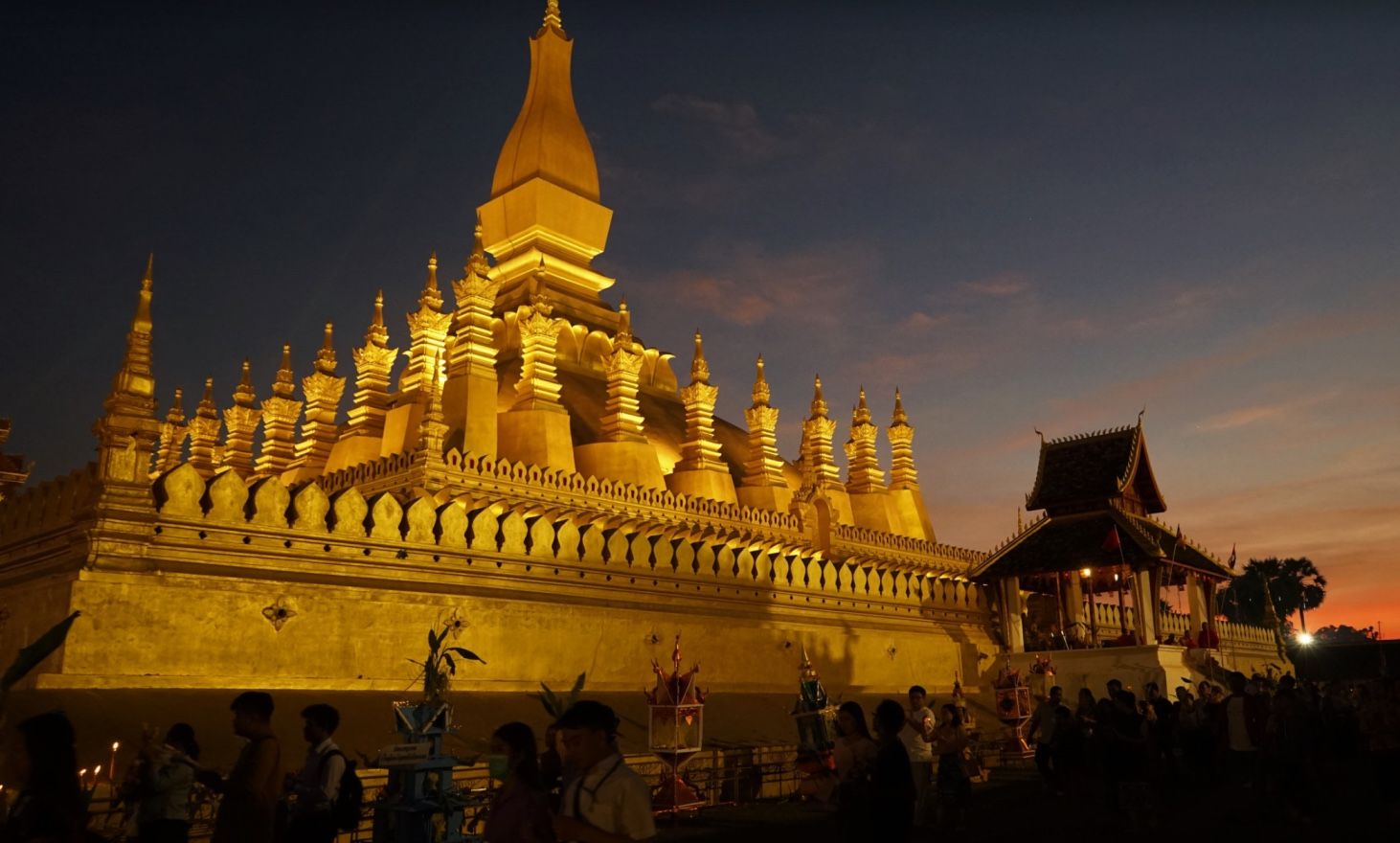
You May Also Like
Long Coc Tea Hills in Phu Tho: A Hidden Photography Spot Near Hanoi
Long Coc Tea Hills in Phu Tho is a breathtaking hidden gem in northern Vietnam, ...
The Ultimate Guide For Visiting Visit Vietnam In February: Weather, Festivals & Itineraries
Imagine walking through Hanoi’s Old Quarter as peach blossoms bloom in doorways, or sitting by ...
Toilets in Vietnam: A Traveler’s Guide for Squat Toilets, Public Bathrooms & Flushing Paper
Let’s be honest—when you travel, toilets matter more than you expect. In Vietnam, they quickly ...
20 Traditional Vietnamese Folk Games
Traditional folk games in Vietnam are more than just childhood pastimes. They are the living, ...
How to Register a Company in Vietnam (2026 Guide)
Foreign investors planning to do business in Vietnam face a multifaceted legal system and bureaucratic ...
Visiting Vietnam in January 2026: Weather, Costs, Festivals & Travel Tips
I visited Vietnam in January 2026, and I still remember the crisp, cool air in ...